
HMS Attacker (D02) was an American-built escort carrier that served with the Royal Navy during the Second World War.
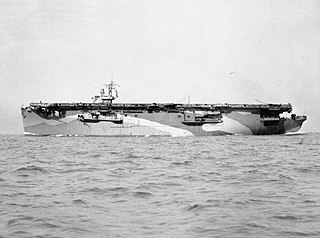
USS Block Island (CVE-8) was an Attacker-class escort aircraft carrier that served during World War II.

The name Prince William (CVE-19) was assigned to MC hull 198, a converted C3 laid down by the Western Pipe and Steel Company, San Francisco, California, 15 December 1941.

HMS Atheling (D51) was a Royal Navy Ruler-class escort carrier of the Second World War. She was a US built ship provided under lend lease and returned to the US at the end of hostilities.

USS Pybus (CVE-34) was initially a United States Navy Bogue-class escort carrier. The ship was transferred to the United Kingdom for service in the Royal Navy as the Ruler-class escort carrier HMS Emperor (D98) as part of the Lend-Lease program of World War II. Entering service in 1943, the ship took part in operations against the German battleship Tirpitz and the invasions of Normandy and southern France. Returned to the United States following the war, the carrier was sold for scrap in 1946.
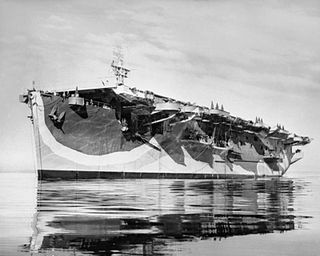
USS Bastian (CVE-37) was a Bogue-class escort aircraft carrier built by Seattle-Tacoma Shipbuilding of Tacoma, Washington, laid down on 25 August 1942 and launched 15 December 1942. She was transferred to the United Kingdom, under Lend-Lease and commissioned on 4 August 1943 as the Ruler-class escort carrier HMS Trumpeter (D09).

USS Carnegie (CVE-38) was an escort aircraft carrier built in 1942-43 for transfer to the United Kingdom. She was reclassified ACV-38 on 20 August 1942, and CVE-38 on 15 July 1943. She was commissioned on 9 August 1943 for a period of three days prior to being turned over to the United Kingdom, under whom she served as HMS Empress (D42).

USS Cordova (CVE-39) was an escort carrier launched 27 December 1942 by Seattle-Tacoma Shipbuilding of Tacoma, Washington; sponsored by Mrs. A. E. Mitchell. Reclassified CVE-39 on 15 July 1943, Cordova was transferred to the Royal Navy on 25 August 1943, as HMS Khedive (D62)Khedive served as the command ship for the South of France invasion in August 1944. From April to August 1945 was with the East Indies Fleet as part of the 21st Aircraft Carrier Squadron. Khedive was to take part in the invasion of Singapore in September 1945, codenamed Operation Tiderace. But with the Japanese surrender, she was merely deployed to the island for security.

HMS Speaker (D90), a Ruler-class escort carrier, based on a "C3" hull, was originally the Bogue-classUSS Delgada (AVG/ACV/CVE-40), which was transferred to the United Kingdom under the Lend-Lease program.
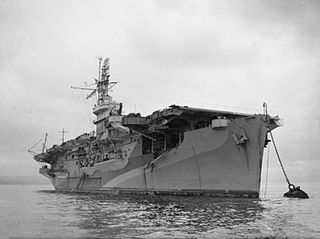
The first USS Estero (CVE-42) was an escort aircraft carrier launched 22 March 1943 by the Seattle-Tacoma Shipbuilding Corporation, Seattle, Washington, and sponsored by Mrs. C. N. Ingraham. She was reclassified CVE-42 on 15 July 1943. Completed in October 1943, she was transferred to the Royal Navy on 3 November 1943 and commissioned the same day as HMS Premier.

USS Jamaica (CVE-43), was an escort carrier of World War II that served in the British Royal Navy as HMS Shah (D21). Returned to the United States at war's end, she was converted into a merchant vessel and she was sold into civilian service in 1946 as Salta. She was ultimately scrapped in 1966.

HMS Patroller was an escort carrier in the Royal Navy during the Second World War. Laid down in 1942 at the Seattle-Tacoma Shipbuilding company, she was originally named USS Keweenaw (CVE-44). USS Keweenaw was an escort carrier laid down under Maritime Commission contract by Seattle-Tacoma Shipbuilding of Tacoma, Washington, 27 November 1942; launched 6 May 1943; sponsored by Mrs. R. G. Risley; assigned to the United Kingdom 10 June 1943; reclassified CVE-44 on 15 July 1943; and transferred to the United Kingdom under lend-lease 22 October 1943.
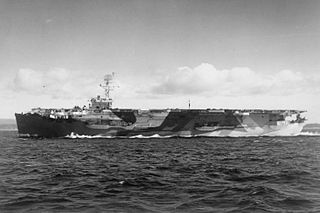
USS Prince (CVE-45) was an escort carrier laid down on 17 December 1942 by the Seattle-Tacoma Shipbuilding Corporation of Tacoma, Washington. She was renamed Prince on 13 November 1942 and launched on 18 May 1943. She was sponsored by Mrs. J. L. McGuigan, reclassified CVE-45 on 15 July 1943 and transferred to the United Kingdom under Lend-Lease on 17 October 1943.

USS Niantic (CVE-46) was a US escort carrier, that served in the Royal Navy as HMS Ranee (D03).

The USS Perdido (CVE-47) was a Bogue-class escort carrier laid down as ACV-47 under Maritime Commission contract by Seattle-Tacoma Shipbuilding of Tacoma, Washington, 1 February 1943; launched 16 June 1943; sponsored by Mrs. H. M. Bemis, reclassified as CVE-47 on 15 July 1943; and completed at the Commercial Iron Works, Portland, Oregon.

The USS St. Andrews (CVE-49) was assigned to MC hull 260 on 23 August 1942, a ship to be built to modified C3-S-A1 plans. She was laid down on 12 March 1943 by the Seattle-Tacoma Shipbuilding Corporation of Tacoma, Washington; redesignated CVE-49 on 15 July; and launched on 31 July; sponsored by Mrs. Robert W. Morse; transferred to the United Kingdom under Lend-Lease on 7 December; and commissioned the same day as HMS Queen (D19) in the Royal Navy.
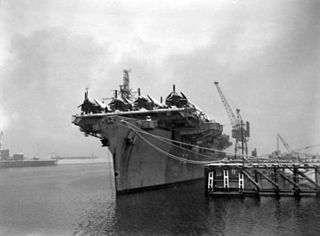
HMS Ruler was a Ruler-class escort carrier of the British Royal Navy during World War II. She was built in the United States as the Bogue-class carrier St. Joseph (AVG/CVE/ACV-50) for Lend-Lease to the United Kingdom.

USS Winjah (CVE-54), was a Bogue-class escort carrier of the United States Navy, leased to the Royal Navy during World War II.

HMS Searcher was a Ruler-class escort carrier of the Royal Navy. Built in Seattle as a Bogue-class, she was transferred to the United Kingdom under Lend-Lease. Launched in 1942 she served until 29 November 1945. She was sold into merchant service and renamed Captain Theo. In 1966, she was renamed again to Oriental Banker and was finally scrapped in Taiwan in 1976.
Operation Balsam was a British naval operation in World War II, from 10–20 June 1945, under the command of Commodore Geoffrey Oliver. The third in a string of similar missions, the objectives were the naval bombardment and aerial strikes on Japanese airfields in Sumatra, Japanese vessels in the Strait of Malacca, and aerial reconnaissance.



















